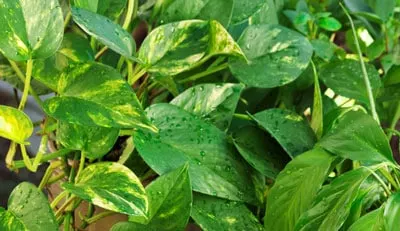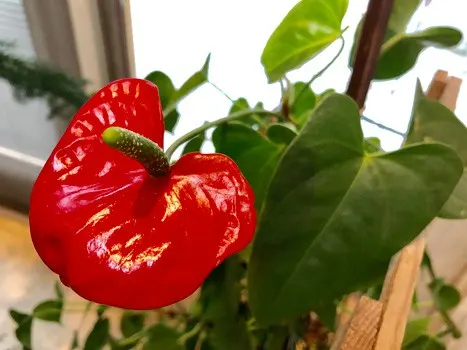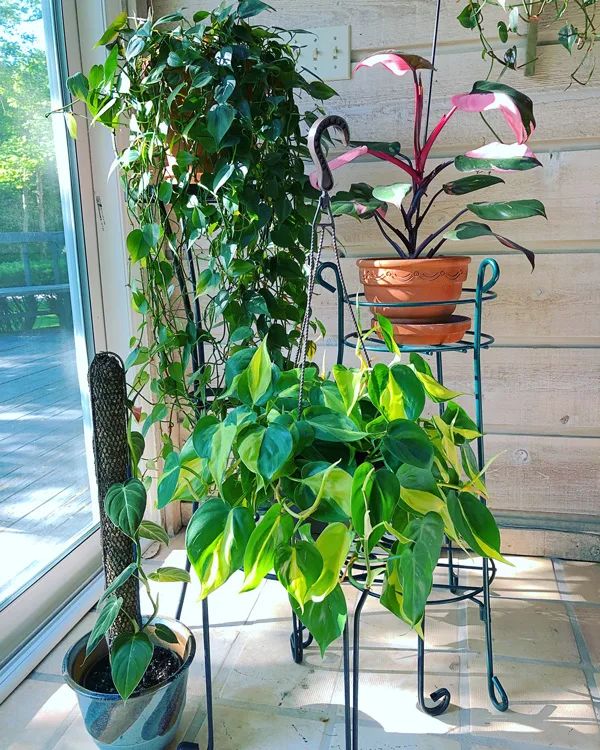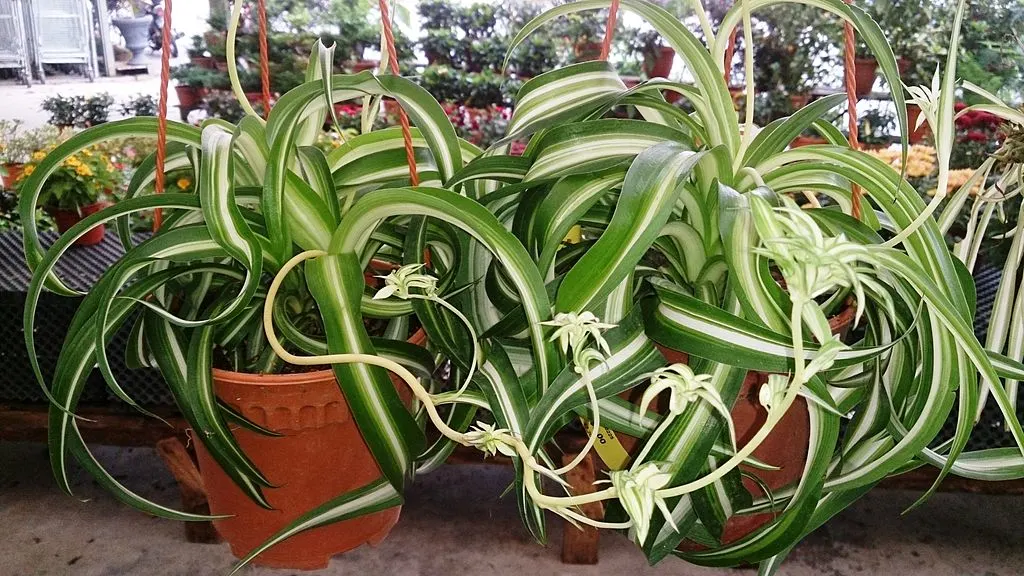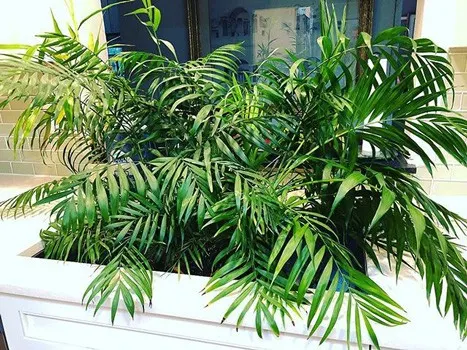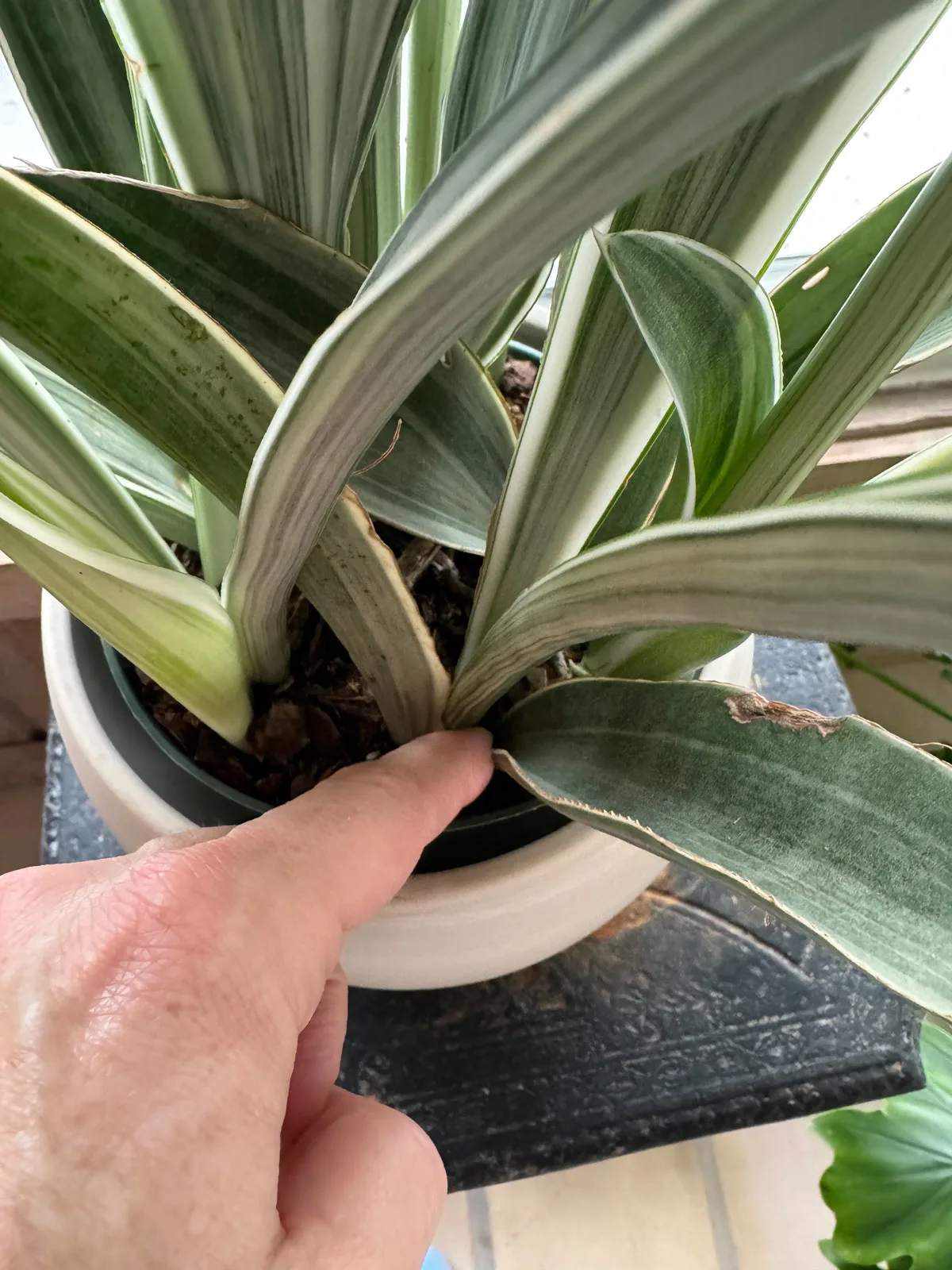Some of the links in this post may be affiliate links.
Did you know that indoor air can be up to 10 times more polluted than outdoor air? Are you looking for houseplants to purify your indoor air? Maybe you’ve even seen sources that list the results of the NASA study that researched the indoor houseplants that are best for this purpose.
But the fact is that many of the plants from the NASA study are not the easiest to grow indoors. That’s where this post comes in!
I have listed 9 plants below, from the study, that I believe are the among the easiest to grow indoors, and that are also largely unbothered by pests. Many of these houseplants are also great for lower light areas.
Table of Contents
Why Indoor Air Can Be Hazardous to Your Health
Indoor air quality has gotten worse for many reasons over the past few decades. As energy efficiency and hermetically sealed buildings and homes have proliferated, this has reduced air exchange and trapped many pollutants indoors.
Many of the objects found in our homes and office buildings, namely man-made and engineered materials, are spewing toxic substances into the air we breathe.
Substances like formaldehyde, xylene, toluene, benzene, chloroform, ammonia, and various alcohols are being released into our air from things like adhesives, carpeting, paints, paper towels, plywood, tobacco smoke, upholstery, wall coverings, cleaning products, and many others. Some of these chemicals are even carcinogenic.
Many years ago when I was in middle school and high school, I had learned that houseplants were able to remove many of the toxic substances in our indoor air. My father smoked a LOT so I started to fill up the house with plants!
Sick Building Syndrome
In the 1980’s, many illnesses began to become widespread as more and more buildings and homes were built to be energy efficient.
The symptoms associated with toxins trapped in indoor air as a result of this became know as Sick Building Syndrome (SBS).
Among the symptoms associated with sick building syndrome include a proliferation of allergies, asthma, headaches, sinus issues and other respiratory ailments.
In fact, in 1989, the EPA produced a report on indoor air after indoor air quality was analyzed in 10 energy-efficient public buildings.
The results were shocking. In some cases, certain chemical concentrations were 100 times greater than the normal background levels.
Are you surprised that so many people have allergies and other ailments these days when people spend so much of their time indoors?
The 9 Easiest Houseplants to Clean Indoor Air
I have always been of the opinion that more is better when it comes to houseplants! Allow me to introduce the 9 (out of 50) houseplants that I chose below from the NASA study.
I chose these because they are easy to grow, commonly available, fairly disease and pest resistant, and many of them would fare well in lower light!
Moth Orchid
The moth orchid, or Phalaenopsis orchid, has been found to be especially good at removing xylene from the air. They are definitely the easiest orchid that you can grow, and will reward you with months of blooms.
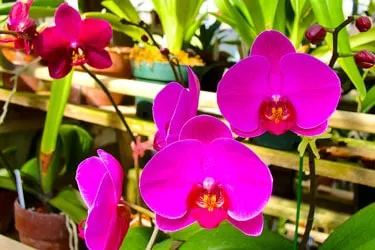
I love these plants so much that I wrote a short book on them! Moth Orchid Mastery is available in eBook, paperback and audio book formats.
Peace Lily
This plant is among the best plants overall for removing a vast array of chemicals from your indoor air. As mundane as they may seem, they are powerhouse cleaners of your indoor air! Not to mention VERY easy to grow!
They are particularly good at removing alcohols, acetone, trichloroethylene, benzene and formaldehyde.
Part of the reason why this plant is so great at removing indoor toxins is because it has a high transpiration rate. Transpiration is simply the evaporation of water from plant leaves.
Why does transpiration aid in helping to remove air toxins? As water moves quickly from the roots up through the stems and leaves, air is actually pulled down near the roots and this adds nitrogen gas and oxygen to the soil.
At this point, there are microbes that actually convert nitrogen gas into nitrates. Plants end up using nitrates as a nutrient.
As a result of this air movement, plants with higher transpiration rates are able to effectively move toxic indoor air into the plant roots where microbes break down the chemical gases into nutrients that the plant can use. Isn’t this amazing?
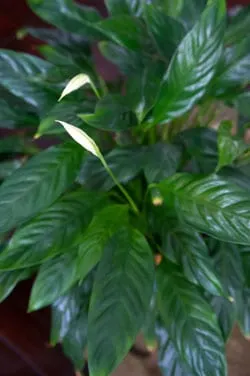
Rubber Plant
This plant is also an overall powerhouse in removing chemical vapors from your air. Of all the ficus plants tested in the NASA study, this one excelled the most at removing toxins.
It has been shown to be particularly good at removing formaldehyde from your indoor air.
These plants are tolerant of low light, but will do better in brighter conditions. They are overall very easy to grow.
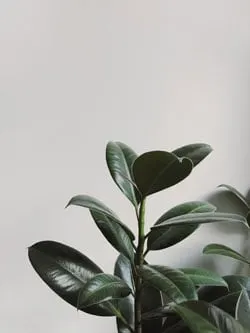
Corn Plant
The common corn plant (Dracaena fragrans) is one of the best indoor plants at removing chemical vapors. It is especially good, like the rubber plant, at removing formaldehyde.
These plants are also tolerant of lower light, but will grow and look better if you give them brighter indirect light.
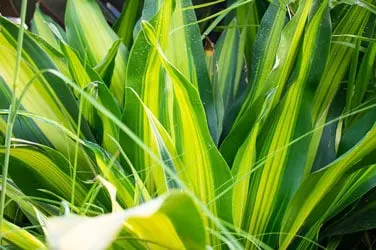
Golden Pothos
What houseplant collection is complete without a pothos? Or two…or three. They are among the easiest and most popular houseplants, and everyone knows how easy they are to propagate.
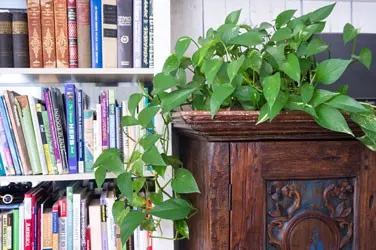
Check out my blog post on pothos care for more information on growing these beauties.
Heart Leaf Philodendron
If you can grow pothos, you can grow heart leaf philodendron. Although they look similar, they have their own distinctive flair and deserve their own spot in your home!
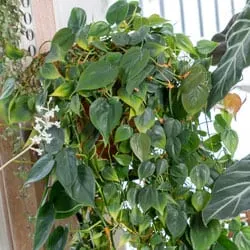
Parlor Palm
I believe this is the easiest indoor palm to grow by far. I’ve tried many, and parlor palms are the only palm that I will grow indoors.
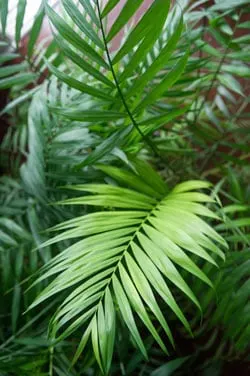
Spider Plant
These plants don’t need much of an introduction. Spider plants are a particular delight because of their ease of growth, and also they are fun to propagate!
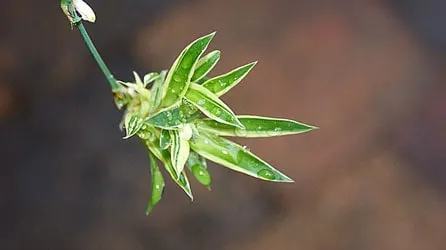
Snake Plant
No houseplant collection is complete without Sansevieria either. They are arguably the easiest and toughest houseplants that you can grow. So load your house up!
An interesting point about snake plants is that they produce oxygen and remove carbon dioxide at night, which is the opposite of many other houseplants.
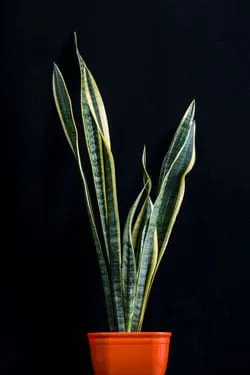
Check out my blog post on growing snakeplants for important care information.
Final Words
If the science behind air purification with houseplants intrigues you, I would highly recommend getting the book How to Grow Fresh Air: 50 Houseplants that Purify Your Home or Office by Dr. B.C. Wolverton.
I ordered it from Amazon and have read it cover to cover. I have found it to be a very fascinating read. After all my educational background is in chemical engineering so I definitely nerded out over reading this book.
The book goes into basic botany of how plants grow, the science behind the NASA experiment, and also includes care information on the 50 houseplants that were studied.
If you enjoyed this post, I’ve written another blog post that evaluates which houseplants are best for humidifying indoor air. The data was extracted from the book mentioned above.
Houseplants are NOT just for beauty. Of course, they definitely add to the beauty and ambiance of your home. But they also are able to help keep your indoor air fresh and clean, and with lower levels of toxins in your indoor air. So load up on your houseplants!

